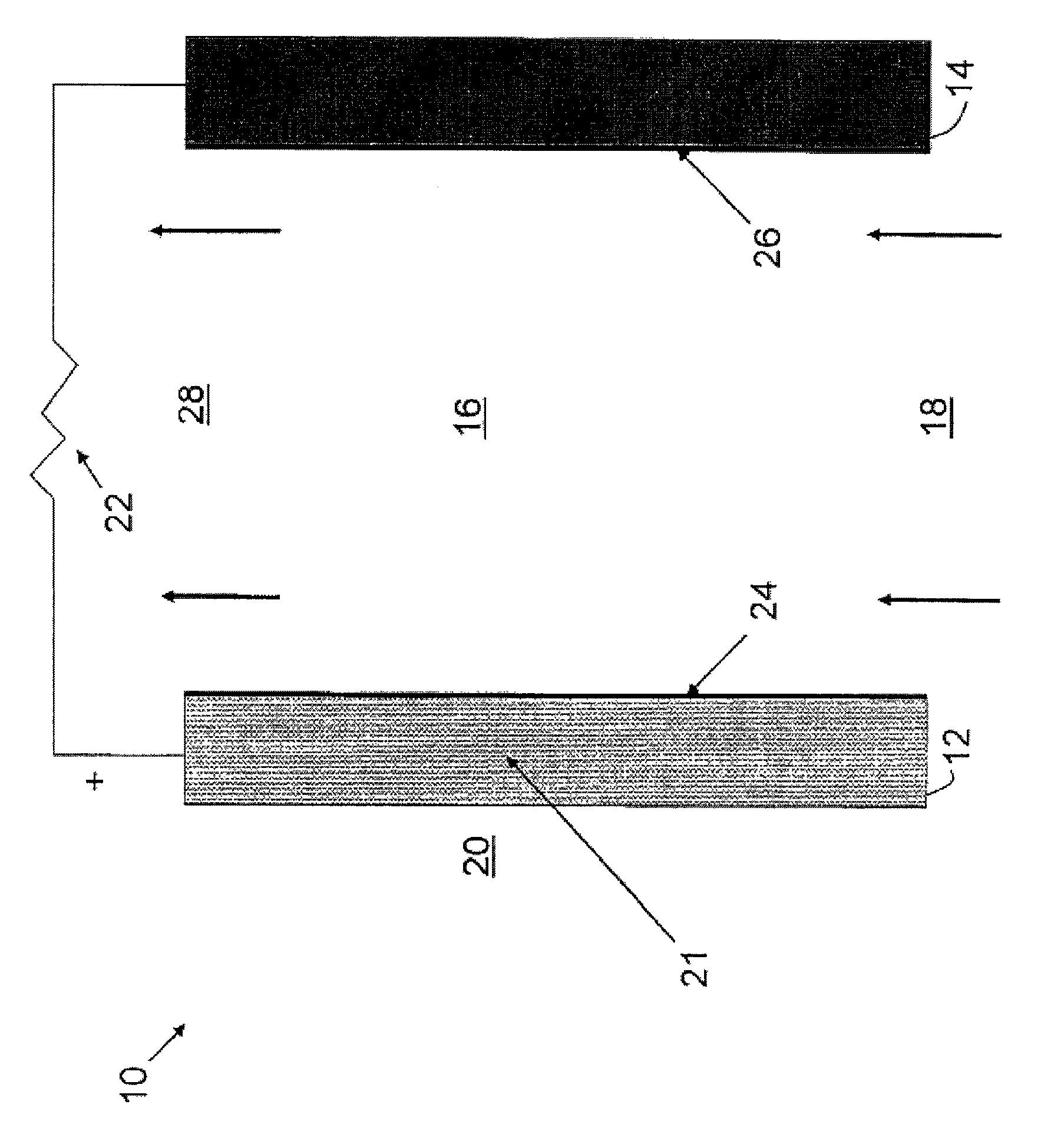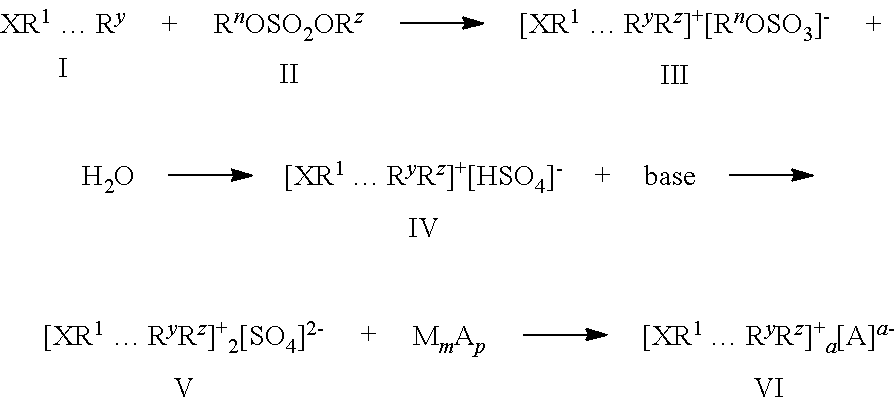Methods of producing sulfate salts of cations from heteroatomic compounds and dialkyl sulfates and uses thereof
a dialkyl sulfate and cation technology, applied in the field of dialkyl sulfate and dialkyl sulfate production methods, can solve the problems of halide having detrimental effects on electrochemical devices, so as to reduce gaseous oxygen
- Summary
- Abstract
- Description
- Claims
- Application Information
AI Technical Summary
Benefits of technology
Problems solved by technology
Method used
Image
Examples
example 1
1-Propanaminium,2-(hydroxymethyl)-N,N,N,2-tetramethyl sulfate
[0066]The sulfate salt of 1-propanaminium,2-(hydroxymethyl)-N,N,N,2-tetramethyl- may be synthesized as shown in the reaction sequences below. About 22.595 g (25 ml) of amino alcohol, available from TCI America, Portland, Oreg. was alkylated with about 33 ml of dimethyl sulfate, available from Sigma-Aldrich, St. Louis, Mo. to produce the methyl sulfate salt
[0067]Alkylation:
[0068]
[0069]Hydrolysis: The methyl sulfate salt from the alkylation reaction above then was hydrolyzed to produce the bisulfate salt in accordance with the following reaction:
[0070]
[0071]Neutralization and purification: The bisulfate salt from the hydrolysis reaction then was neutralized in a 9 wt % sodium carbonate (430.304 g), and the resulting sodium sulfate was precipitated by the addition of ethanol.
[0072]
[0073]The above reactions produced about 33.030 grams of 1-propanaminium,2-(hydroxymethyl)-N,N,N,2-tetramethyl-sulfate salt. This salt then can be ...
example 2
N-Ethyl-N-methylmorpholinium sulfate
[0074]The sulfate salt of N-ethyl-N-methylmorpholinium is synthesized as below:
[0075]
example 3
1-Ethyl-2,3-dimethylimidazolium sulfate
[0076]The sulfate salt of 1-ethyl-2,3-dimethylimidazolium may be synthesized as below:
[0077]
PUM
| Property | Measurement | Unit |
|---|---|---|
| melting point | aaaaa | aaaaa |
| melting point | aaaaa | aaaaa |
| temperature | aaaaa | aaaaa |
Abstract
Description
Claims
Application Information
 Login to View More
Login to View More - R&D
- Intellectual Property
- Life Sciences
- Materials
- Tech Scout
- Unparalleled Data Quality
- Higher Quality Content
- 60% Fewer Hallucinations
Browse by: Latest US Patents, China's latest patents, Technical Efficacy Thesaurus, Application Domain, Technology Topic, Popular Technical Reports.
© 2025 PatSnap. All rights reserved.Legal|Privacy policy|Modern Slavery Act Transparency Statement|Sitemap|About US| Contact US: help@patsnap.com



